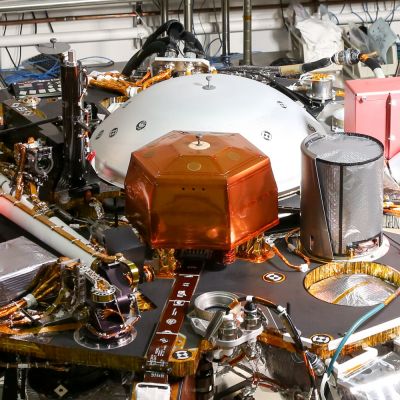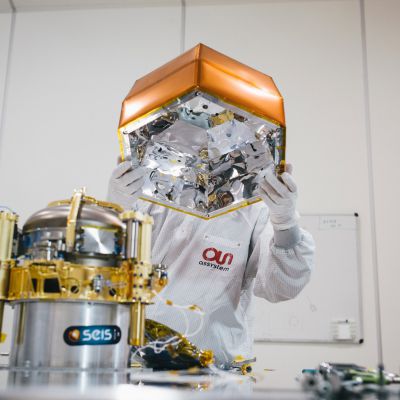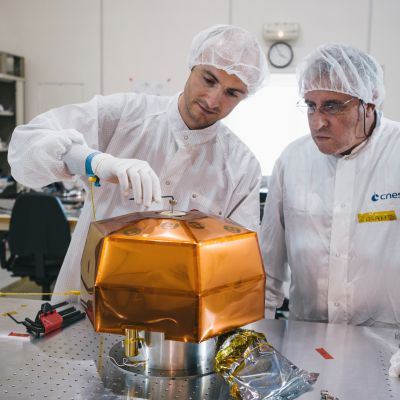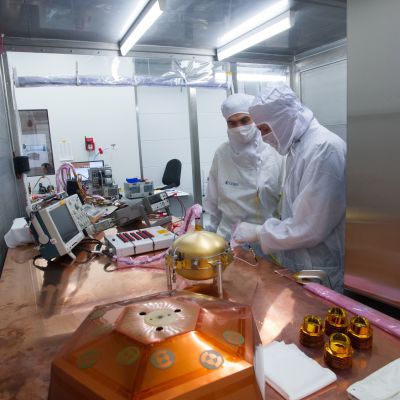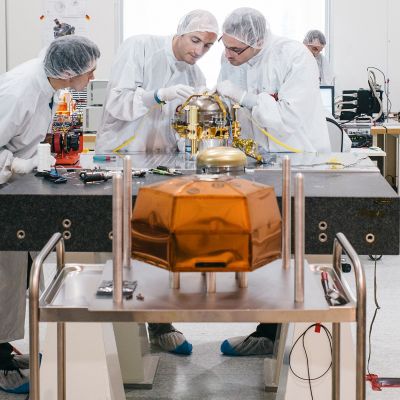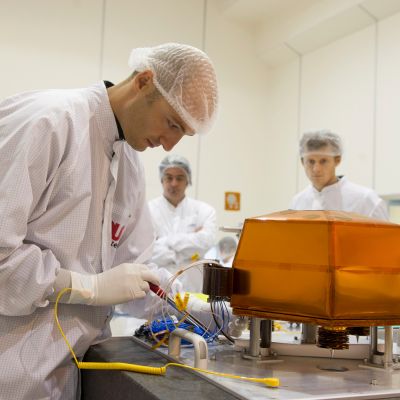The RWEB honeycomb thermal shield
An ingenious thermal protective barrier using Martian air
Geophysicists on Earth always try to install seismometers in places where the temperature is stable, ideally in disused mine galleries or shafts.
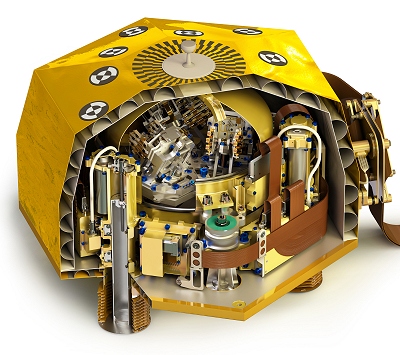 Cut-away of the SEIS instrument, showing the structure of the Remote Warm Electronic Box (© IPGP/David Ducros).
Cut-away of the SEIS instrument, showing the structure of the Remote Warm Electronic Box (© IPGP/David Ducros).
On Mars, the daily extremes of temperature are a major obstacle for seismic measurements. On the InSight landing site, the Elysium Planitia, meteorologists estimate that the difference in temperature between day and night could be as much as 70 to 80°C. This represents a very uncomfortable situation for a seismometer as sensitive as SEIS, especially when attempting to measure long-period (i.e. low frequency) seismic signals. Higher frequency signals are less influenced by thermal fluctuations.
The engineers responsible for developing the InSight seismometer therefore wanted to improve the degree of thermal protection. This is why the pendulums, which form the heart of the instrument, are enclosed in a highly evacuated sphere whose inner surface is coated with a thermal screen. However, these precautions are not sufficient and the sphere itself is placed inside a sophisticated thermally-protected enclosure known as the RWEB (Remote Warm Enclosure Box).
Tiny cells for trapping Martian CO2
With a mass of 0,75 kg and measuring roughly 42 cm across, this hexagonal cover makes good use of the exceptional properties of an unexpected ally: the Martian atmosphere itself!
The CO2 making up the Martian atmosphere persists in any interstice provided the gap between hot and cold walls is less than 2 cm, regardless of the temperature difference between the inside and the outside.
Successive layers of Mylar®— another material known for its low thermal conductivity and used in survival blankets— surrounds the sphere. Each layer is spaced less than 2 cm from its neighbour so as to form an effective trap for CO2. The inside of each layer is silver-coated while the outside is gold-coated in order to further improve the thermal insulation.
At the top of the RWEB is a small rod terminated by a sphere forming a kind of handle which can be grasped by the five fingers of the grabber on the InSight lander's robotic arm.
Sundial
Around the handle is a small sundial, which enables geophysicists to estimate the azimuth— i.e. the orientation of the seismometer with respect to the Red Planet's north pole—using their knowledge of the seismometer's location on Mars and the time at which the direction of the shadow is measured.
However, the sundial will not work for long. Once on the ground, the RWEB enclosing the titanium sphere which itself houses the seismometer and its three pendulums will be quickly covered over by another protective dome known as the WTS (wind and thermal shield).




